I got some advice from Danny and did a some research on the internet. This what I ended up doing:
I removed both capacitors from the woofer's low-pass circuit - making this part of the circuit into a first order crossover. That reduced the 80hz peak by 2 - 2.5 db and raised the output above 125hz. The overall repsonse was smoother. Here's the near field comparison:
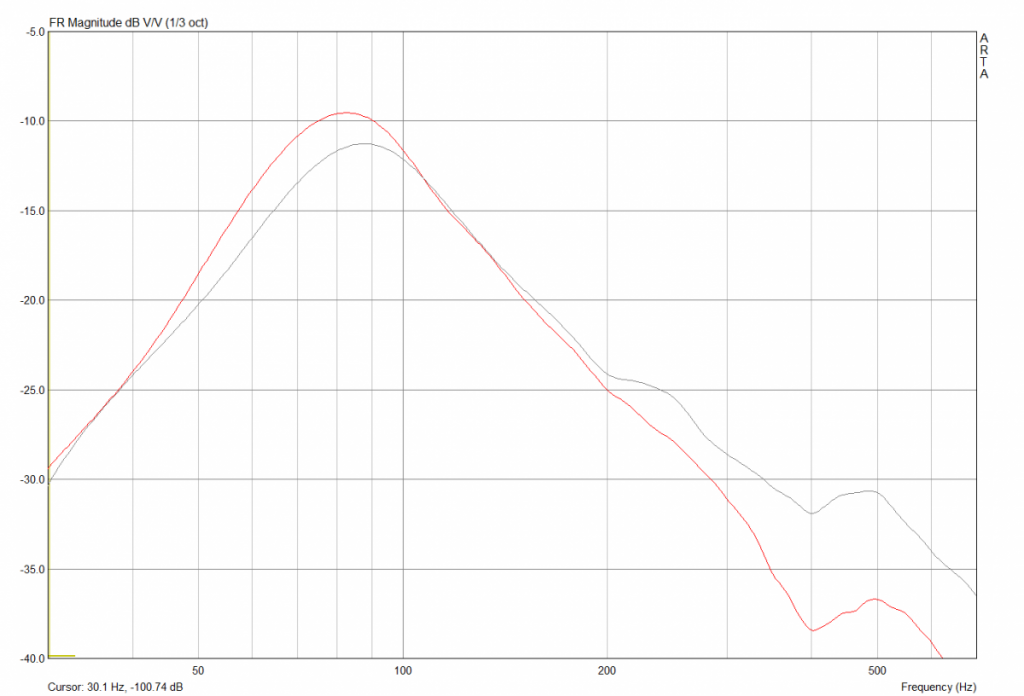
However, the sound still a little boomy. And the measurement in the driveway showed the remaining peak.
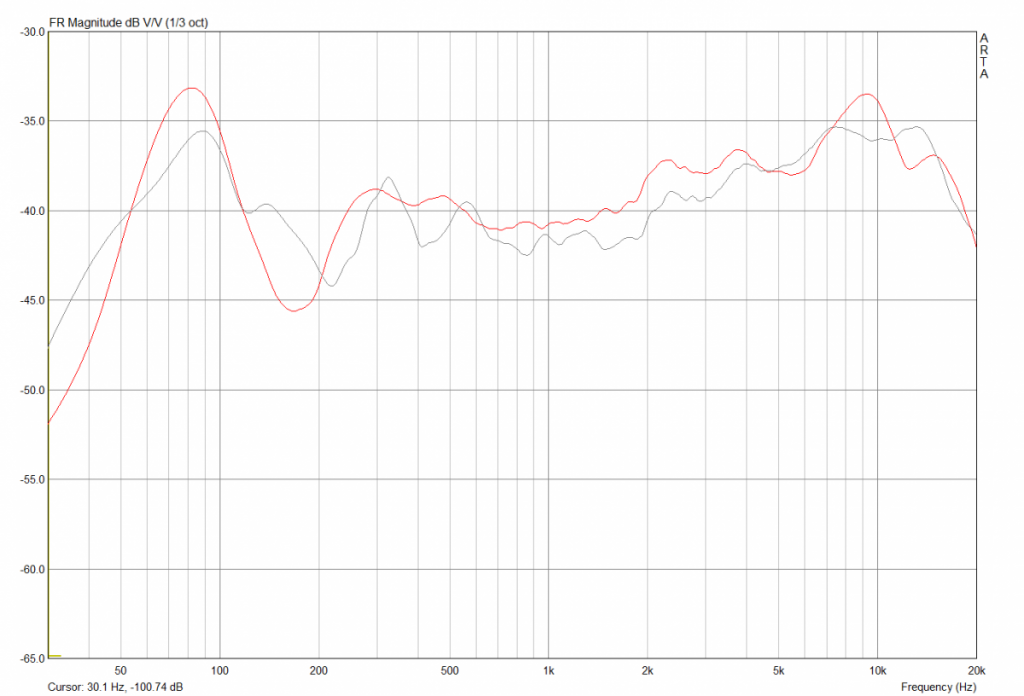
My theory is that the reason for the peak in the first place is that are divers are out of spec. I used an online crossover simulator to simulate the schematic:
http://www.micka.de/en/2weg_en.php. It confirmed that Danny's crossover is an excellent design with very flat response.
So, to further reduce the peak, I tried adding a small amount of mass to the woofers. This lowers the resonant frequency. The tradeoff is lower sensitivity. I tried different masses added on the front.
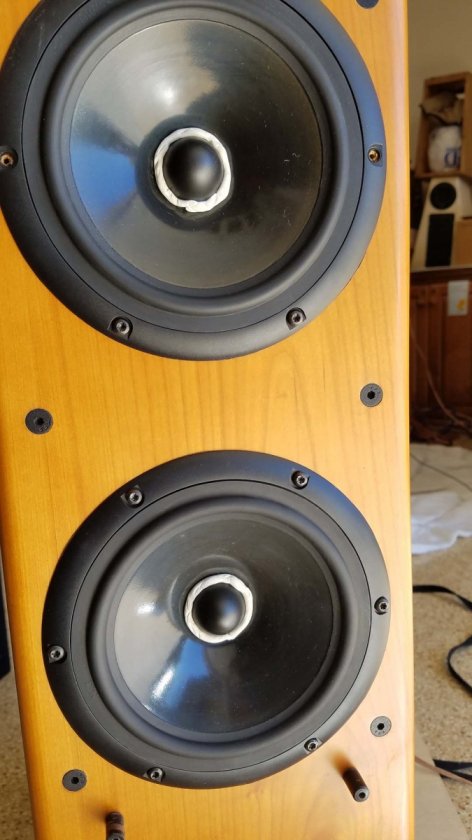
After settling on 2 grams per woofer, I added that mass to the back, wrapping it around the voicecoil. Like this:
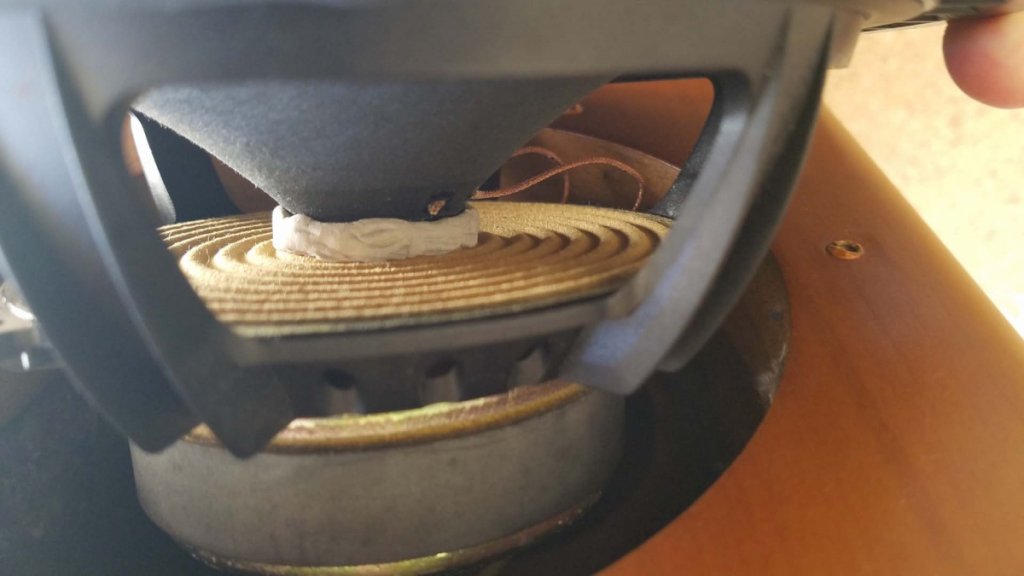
This had the expected effect. Here's nearfield woofer response (added mass is the green line):
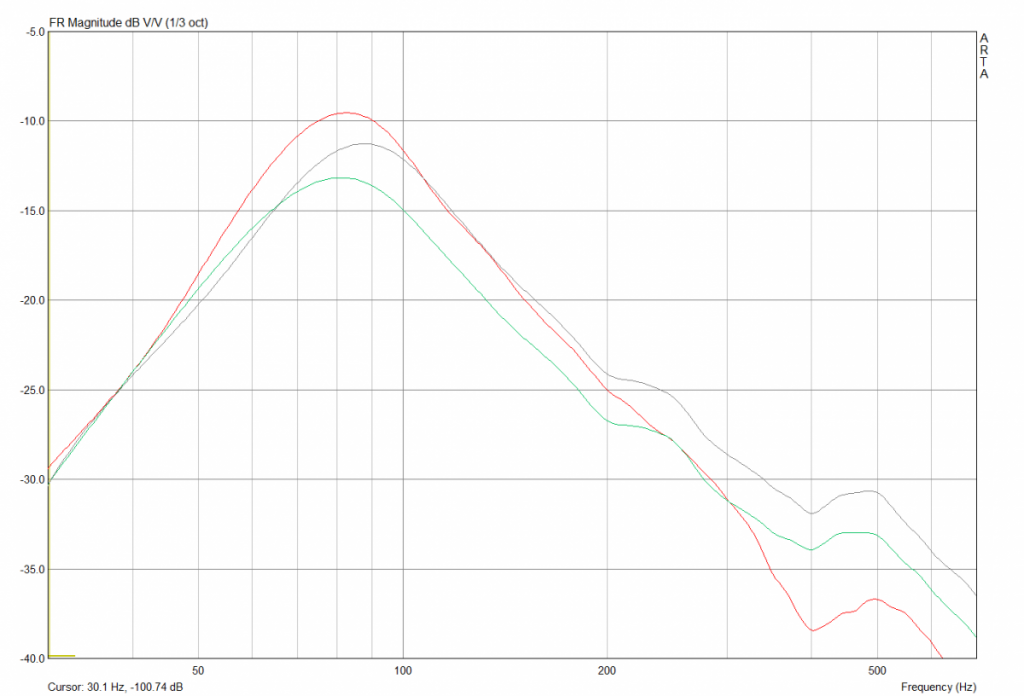
And here's the resulting driveway response, measured at the tweeter level, 3 feet away:
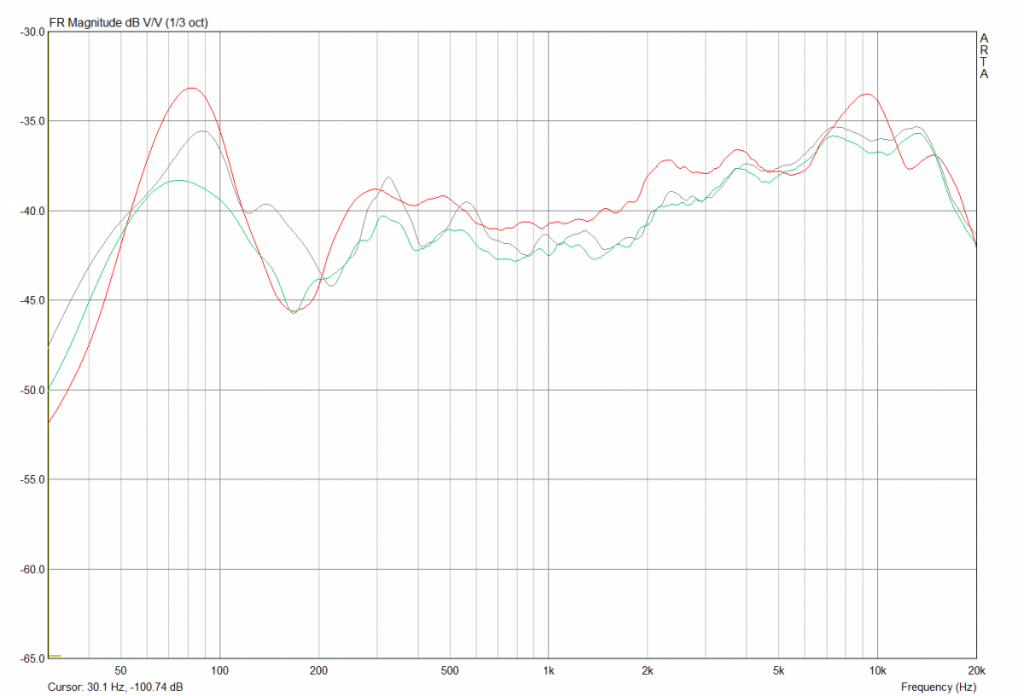
And here's a comparison with another pair of speakes that I like the sound of:
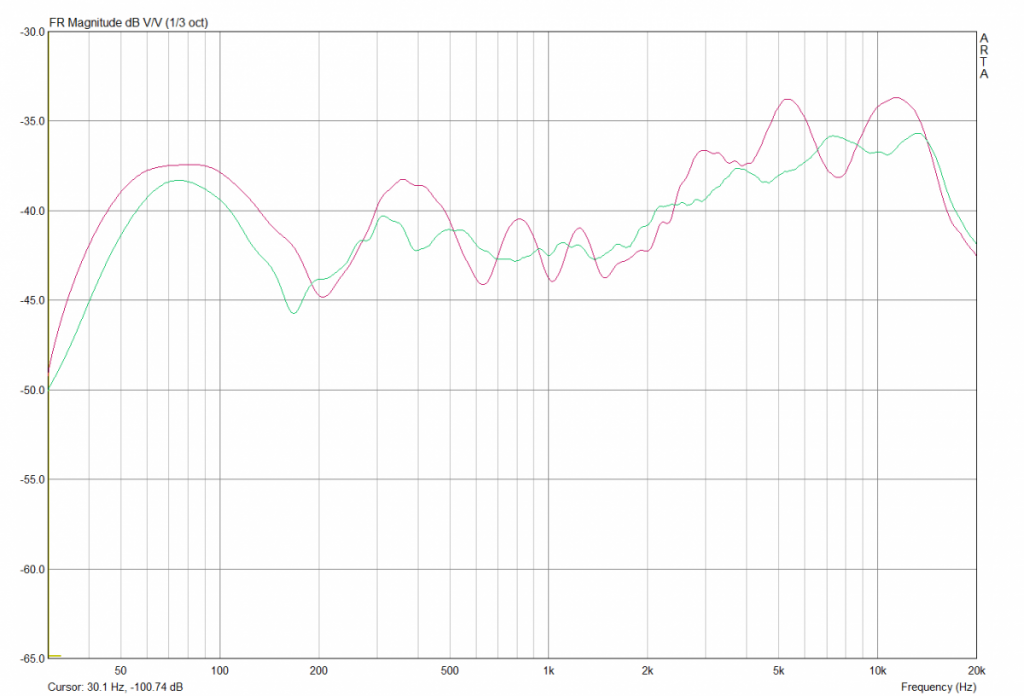 And the sound??? Very very nice now! Not boomy any more. The bass is solid and transistions well to the MFW-15 subwoofer when really low bass is needed. Thank you very much to Danny and others who gave me advice!!
And the sound??? Very very nice now! Not boomy any more. The bass is solid and transistions well to the MFW-15 subwoofer when really low bass is needed. Thank you very much to Danny and others who gave me advice!!A few other comments:
(1) Becuase of the slightly lowered levels on the low end, the speakers are a little bright. The response above 2K is a little high. So, I may try padding the tweeter down a little bit.
(2) This tweeking is only for my particular pair of X-Statiks. I'm not implying that any other X-Statik need this kind of treatment.
(3) In the FR measurements, the dip at 200 hz is a floor bounce effect. I don't hear that dip in listening situations.